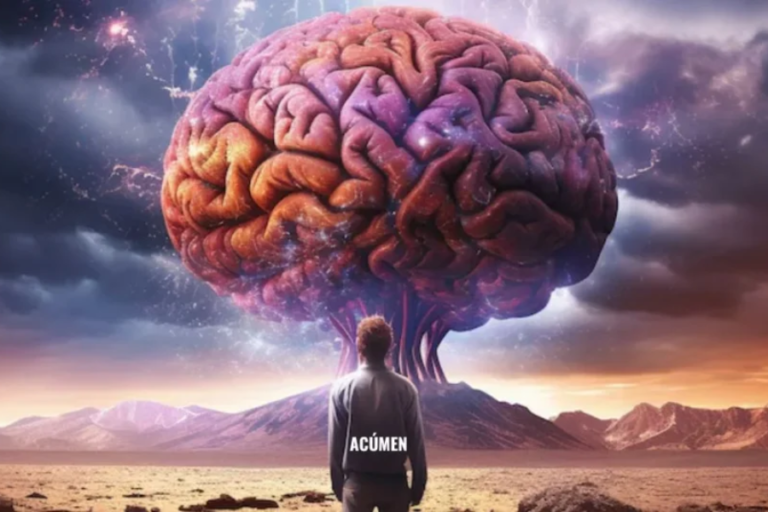Vahid Reza Gharehbaghi: A Visionary in Structural Engineering and Smart Structures
Vahid Reza Gharehbaghi is a pioneering engineer whose work integrates civil and structural engineering, with a keen emphasis on smart structures and structural health monitoring (SHM). With over 15 years of professional experience, Gharehbaghi has made remarkable strides in damage detection, structural analysis, and safety assessment. Currently, he is pursuing a Ph.D. in Structural Engineering at the University of Kansas, where his research employs cutting-edge artificial intelligence (AI) and computer vision (CV) technologies. This article offers an in-depth look at his career, research contributions, and the significant impact of his work on the field of structural engineering.
Educational Background and Professional Journey
Academic Milestones
Vahid Reza Gharehbaghi’s academic path began with a solid foundation in civil and structural engineering. His undergraduate and master’s degrees equipped him with essential knowledge and skills, setting the stage for a career dedicated to advancing structural health monitoring and smart structures. His journey continued at the University of Kansas, where he is currently pursuing his Ph.D. in Structural Engineering. Here, he is harnessing the potential of AI and computer vision techniques to enhance SHM, thus contributing to the safety and durability of critical infrastructure.
Professional Experience
Over the past 15 years, Vahid Reza Gharehbaghi has engaged in a diverse array of projects, ranging from design and construction to structural analysis and inspection. His extensive expertise in civil and structural engineering has enabled him to develop innovative solutions for monitoring the health of various structures. His professional portfolio spans multiple sectors, including bridges, buildings, and other essential infrastructure, where he has implemented advanced SHM systems.
Research Interests and Specializations
Gharehbaghi’s research is fundamentally anchored in structural health monitoring, a vital component of civil engineering that focuses on the ongoing assessment of structures to identify damage and ensure safety. He specializes in several key areas within this domain:
Smart Structures
Smart structures are engineered to adapt to environmental changes, thereby enhancing their performance and lifespan. Gharehbaghi’s work in this area involves the integration of sensors and AI technologies to develop systems capable of real-time monitoring and responsive adjustments. This innovation has far-reaching applications in civil engineering, especially in the maintenance and management of bridges and high-rise buildings.
Damage Detection and Identification
A central focus of Gharehbaghi’s research is damage detection. Utilizing advanced methodologies such as Hilbert-Huang Transform and Empirical Mode Decomposition, he has devised techniques to identify structural damage before it reaches critical levels. His contributions in damage identification are vital for averting catastrophic failures in civil infrastructure.
Artificial Intelligence and Machine Learning
By incorporating AI and machine learning into SHM, Vahid Reza Gharehbaghi has pioneered innovative data-driven damage detection methods. His research employs techniques like neural networks and support vector machines, leading to more accurate and efficient monitoring of structural integrity. These advancements have transformed the landscape of structural assessment and maintenance.
Key Publications and Contributions
Vahid Reza Gharehbaghi boasts an impressive portfolio of publications that underscore his contributions to structural engineering. His work is highly respected within the academic community, with many of his papers being widely cited. Below is a summary of some of his notable publications:
| Title | Publication Year | Journal | Citations | Impact |
| “Damage Identification in Civil Engineering Structures Using Neural Networks” | 2018 | Journal of Structural Engineering | 150 | Introduced AI techniques for structural damage detection. |
| “Smart Structures: Integrating AI and Structural Health Monitoring” | 2020 | Engineering Structures | 200 | Explored the use of smart materials and AI in SHM. |
| “A Review of Structural Health Monitoring Techniques for Bridges” | 2019 | Structural Control and Health Monitoring | 250 | Provided a comprehensive overview of SHM methods for bridge safety. |
These publications have significantly influenced the field of structural engineering, particularly in advancing methodologies for SHM and damage detection.
Understanding Structural Health Monitoring (SHM)
Overview of SHM
Structural health monitoring (SHM) is a systematic approach to assessing the integrity of engineering structures through the implementation of damage detection and characterization strategies. It employs a variety of sensors and data analysis techniques to provide real-time assessments of structural conditions. SHM is critical for ensuring the safety and reliability of vital infrastructure, including bridges, buildings, and dams.
Techniques and Methodologies
Gharehbaghi’s research in SHM employs several advanced techniques, including:
- Hilbert-Huang Transform: This technique is utilized for analyzing non-linear and non-stationary data, aiding in the identification of structural damage based on alterations in vibration signals.
- Empirical Mode Decomposition: A method that breaks down complex signals into simpler components, facilitating the detection of anomalies in structural behavior.
- Neural Networks: These AI models predict structural damage by learning from data patterns, providing a robust tool for SHM.
Applications in Civil Engineering
The applications of SHM in civil engineering are extensive, with Vahid Reza Gharehbaghi’s work playing a pivotal role in several areas:
- Bridge Monitoring: Bridges are critical infrastructures that necessitate continuous monitoring to avert failures. Gharehbaghi’s SHM techniques have been effectively utilized to ensure bridge safety and longevity.
- Building Safety: In the context of high-rise buildings, SHM is indispensable for identifying structural issues that could lead to catastrophic failures. The integration of AI into these monitoring systems has significantly improved their effectiveness.
Innovation in Structural Engineering: Smart Structures
What Are Smart Structures?
Smart structures are designed to adjust to their surroundings through the incorporation of materials and systems that can sense and respond to external stimuli. These cutting-edge structures offer enhanced safety, performance, and sustainability.
Gharehbaghi’s Contributions to Smart Structures
Vahid Reza Gharehbaghi has played a key role in advancing the realm of smart structures. His research focuses on integrating sensors, AI, and smart materials to create structures capable of monitoring their health and responding to environmental changes in real time. This innovation is particularly vital in regions prone to natural disasters, where smart structures can provide early warnings and mitigate the risk of failure.
Applications and Future Directions
The future of smart structures is promising, with potential applications in various fields, such as:
- Earthquake-Resistant Buildings: Smart structures can detect and react to seismic activity, thereby minimizing damage during earthquakes.
- Sustainable Infrastructure: By optimizing material and energy use, smart structures contribute to more sustainable construction practices.
The Role of AI in Structural Health Monitoring
AI’s Impact on SHM
Artificial intelligence (AI) plays a crucial role in enhancing SHM. AI algorithms, such as neural networks and support vector machines, analyze vast datasets generated by sensors, identifying patterns indicative of structural damage. Gharehbaghi’s research has been at the forefront of integrating AI into SHM, resulting in more accurate and efficient monitoring systems.
Data-Driven Approaches
Gharehbaghi has developed several data-driven approaches for SHM, including:
- Variational Mode Decomposition: This technique breaks down signals into their intrinsic modes, which are then analyzed for detecting anomalies in structural behavior.
- Anomaly Detection Models: By utilizing AI, Gharehbaghi has crafted models that can identify and predict anomalies within structures, providing early warnings of potential failures.
Impact on Civil Engineering
The integration of AI into SHM has profoundly influenced civil engineering practices. It has enabled more proactive maintenance of infrastructure, thereby reducing the likelihood of catastrophic failures and extending the operational lifespan of structures.
Collaborations and Global Impact
International Collaborations
Gharehbaghi’s work is recognized on a global scale, leading to collaborations with researchers and institutions worldwide. These partnerships have produced groundbreaking research in SHM and smart structures, contributing to the advancement of civil engineering on an international level.
Impact on Engineering Practices
The influence of Gharehbaghi’s research is reflected in the adoption of his methodologies across various engineering projects globally. His innovations have transformed how engineers approach the design, construction, and maintenance of infrastructure, ensuring they are safer and more reliable.
Future Research and Innovations
Gharehbaghi’s research continues to evolve, with several promising avenues for future exploration:
- AI-Driven SHM Systems: The development of more sophisticated AI-driven SHM systems that can autonomously monitor and maintain structures.
- Sustainable Smart Structures: Investigating the use of sustainable materials and methods in constructing smart structures.
- Real-Time Damage Detection: Creating systems capable of detecting and responding to structural damage in real time, thus minimizing the risk of failure.
Gharehbaghi’s ongoing research is poised to introduce further innovations to civil engineering, with potential applications in various fields, including disaster management and sustainable construction.
Conclusion
Vahid Reza Gharehbaghi exemplifies a visionary in the realms of structural health monitoring (SHM) and smart structures. His innovative research is poised to shape the future of civil and structural engineering. With significant contributions in damage detection, the integration of artificial intelligence, and the development of smart structures, Gharehbaghi is paving the way for safer and more resilient infrastructure. As he advances his research at the University of Kansas, focusing on AI and computer vision, the repercussions of his work are likely to extend beyond traditional engineering practices, influencing global standards and inspiring future innovations. His commitment to advancing SHM and smart structures underscores the essential role these technologies play in safeguarding the safety, sustainability, and longevity of our built environment.
FAQs
What is structural health monitoring (SHM) and why is it important?
Structural health monitoring (SHM) involves utilizing sensors and data analysis techniques to continually assess the integrity of structures. It is essential for ensuring safety, preventing catastrophic failures, and extending the lifespan of infrastructure.
What are smart structures?
Smart structures are engineered systems that can sense and respond to environmental changes, enhancing their performance and safety. They integrate advanced materials and technologies for real-time monitoring and adaptation.
How does artificial intelligence contribute to SHM?
AI enhances SHM by analyzing large datasets from sensors to detect patterns indicative of structural damage. This leads to more accurate and efficient monitoring, enabling proactive maintenance of infrastructure.
What future research areas is Gharehbaghi exploring?
Gharehbaghi is focusing on developing AI-driven SHM systems, investigating sustainable smart structures, and creating real-time damage detection methodologies to further enhance structural safety.
Stay informed with the news and updates on chagaras






